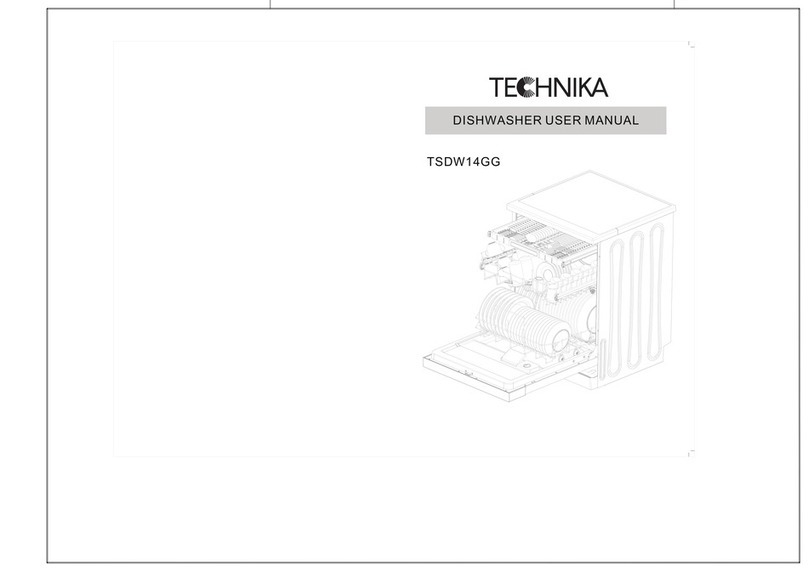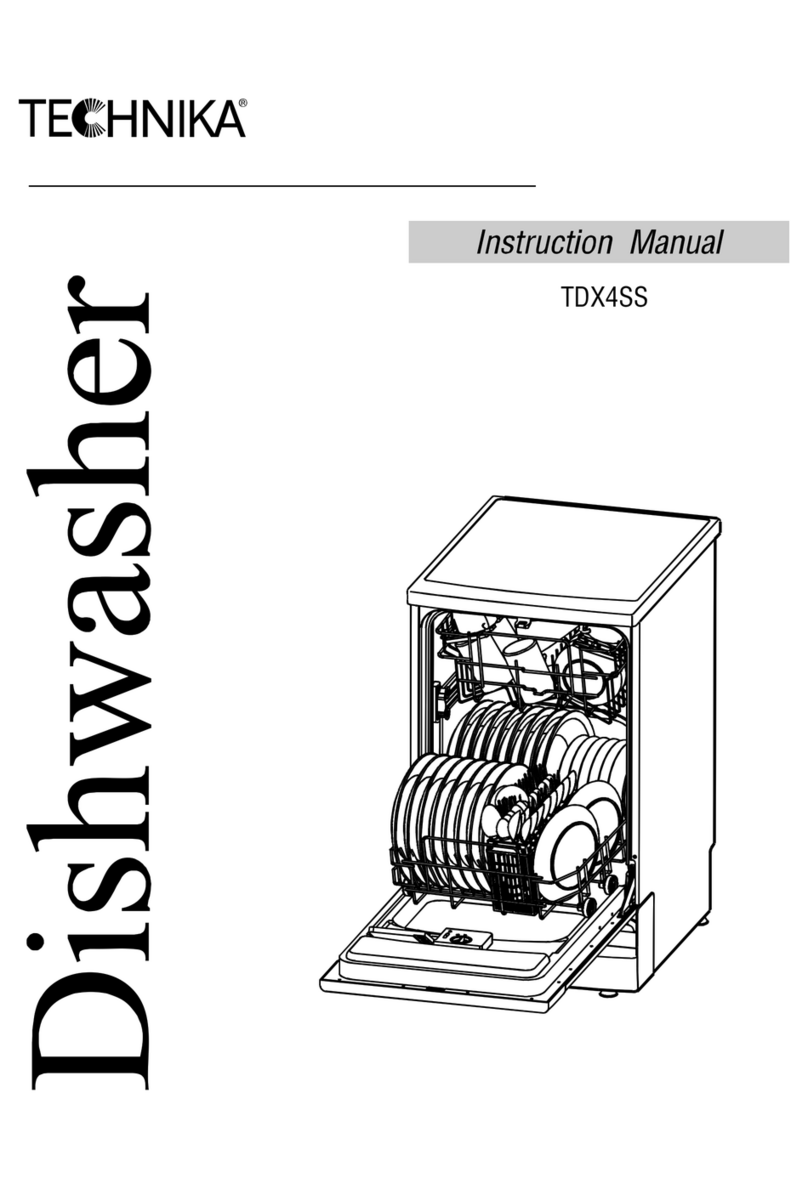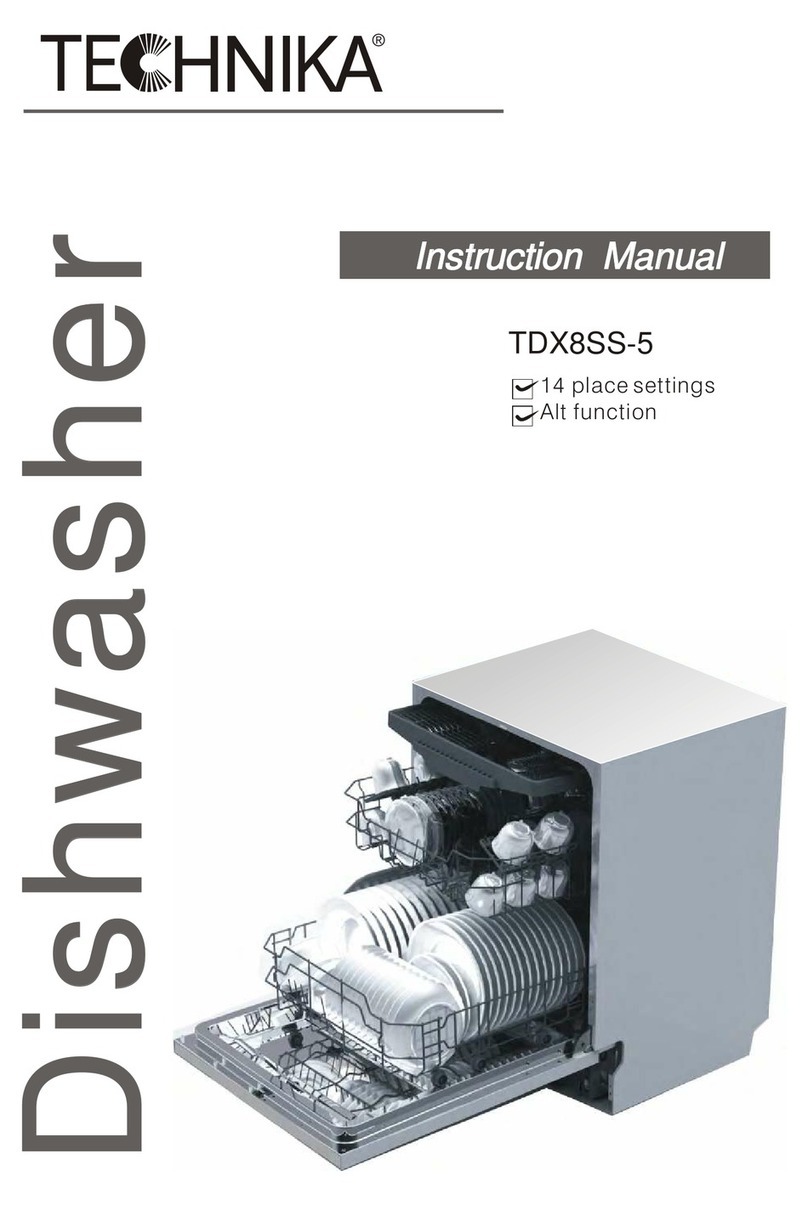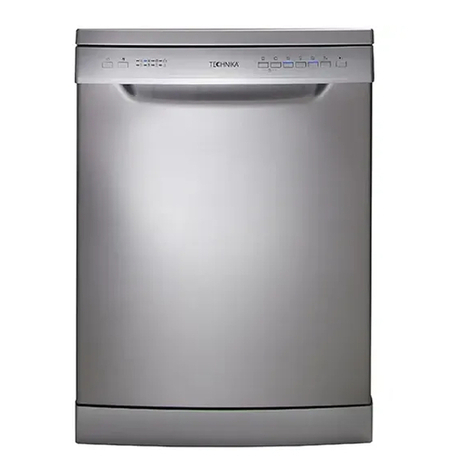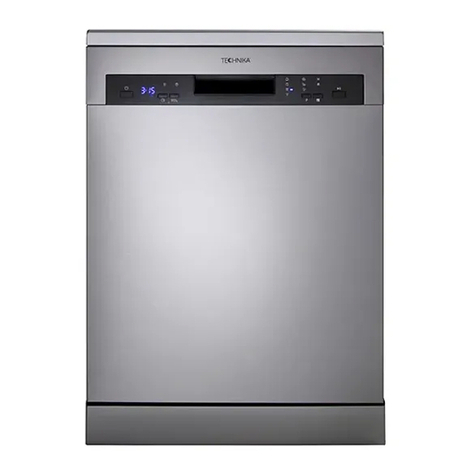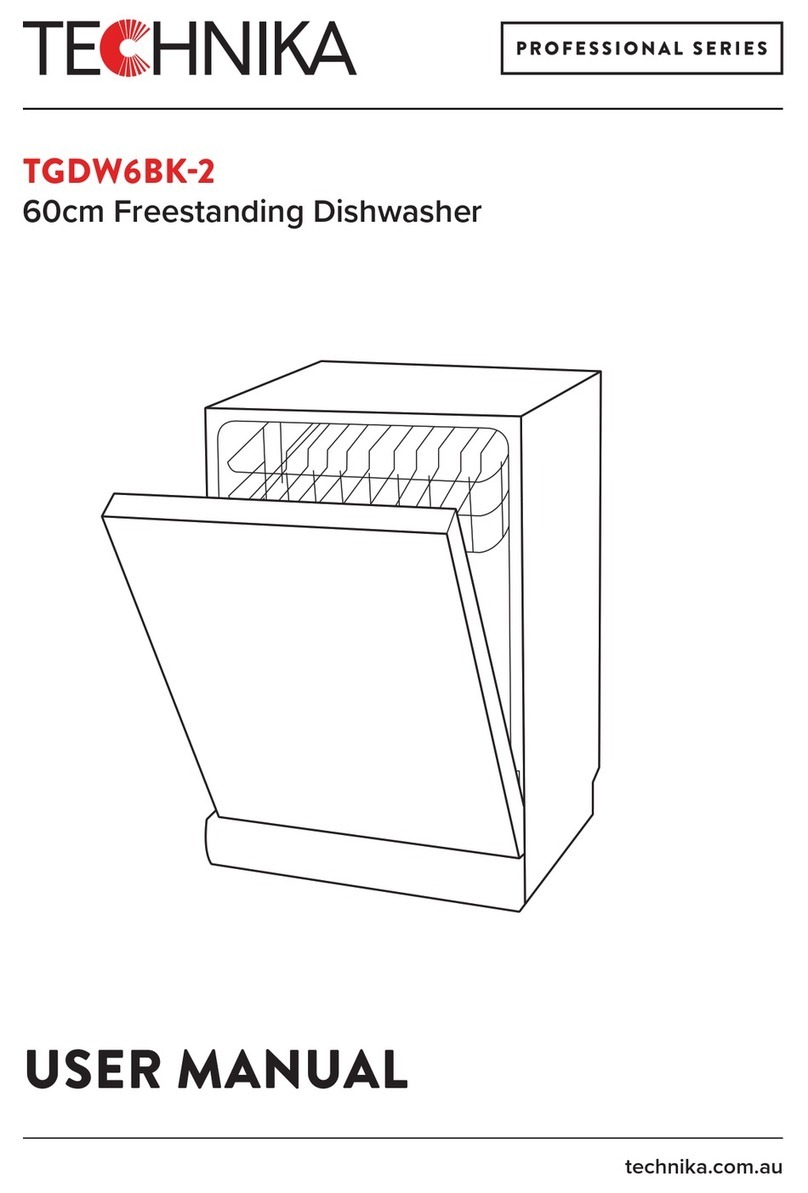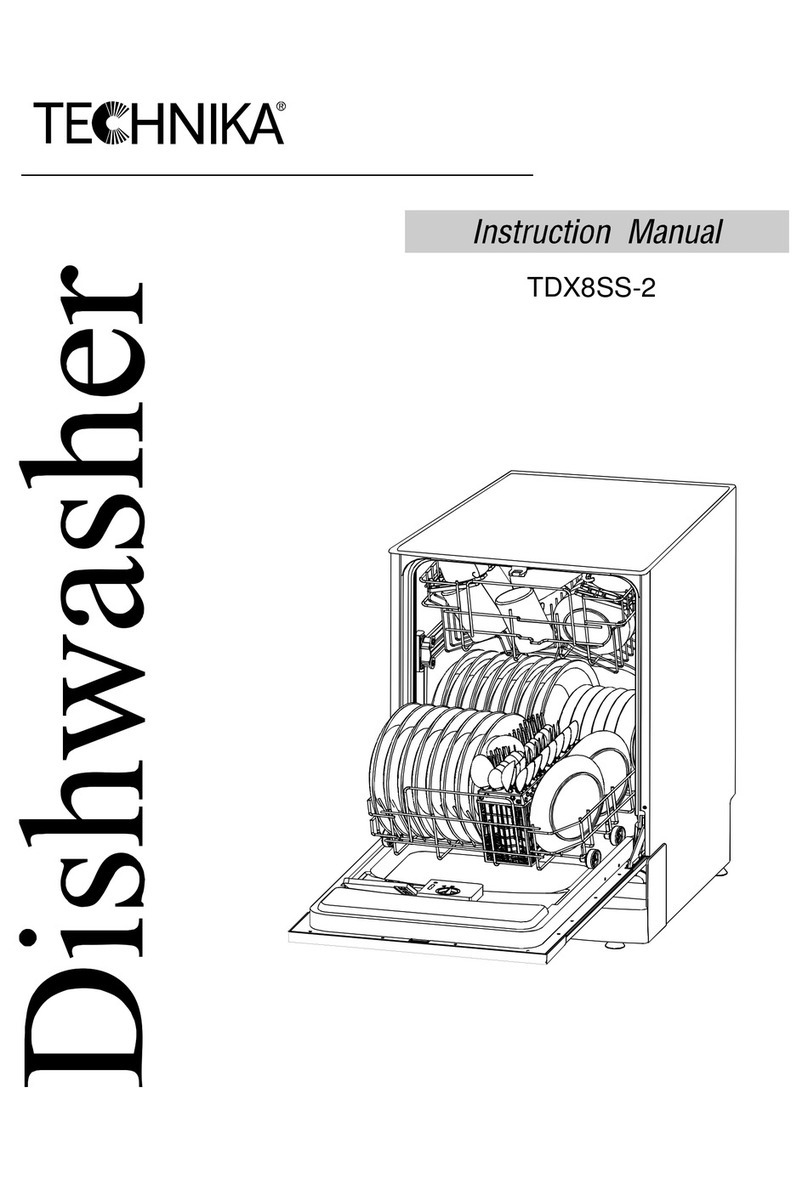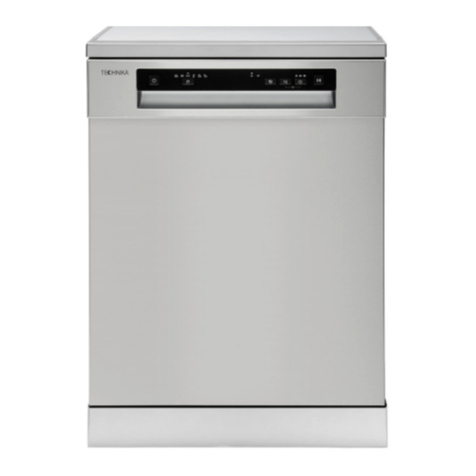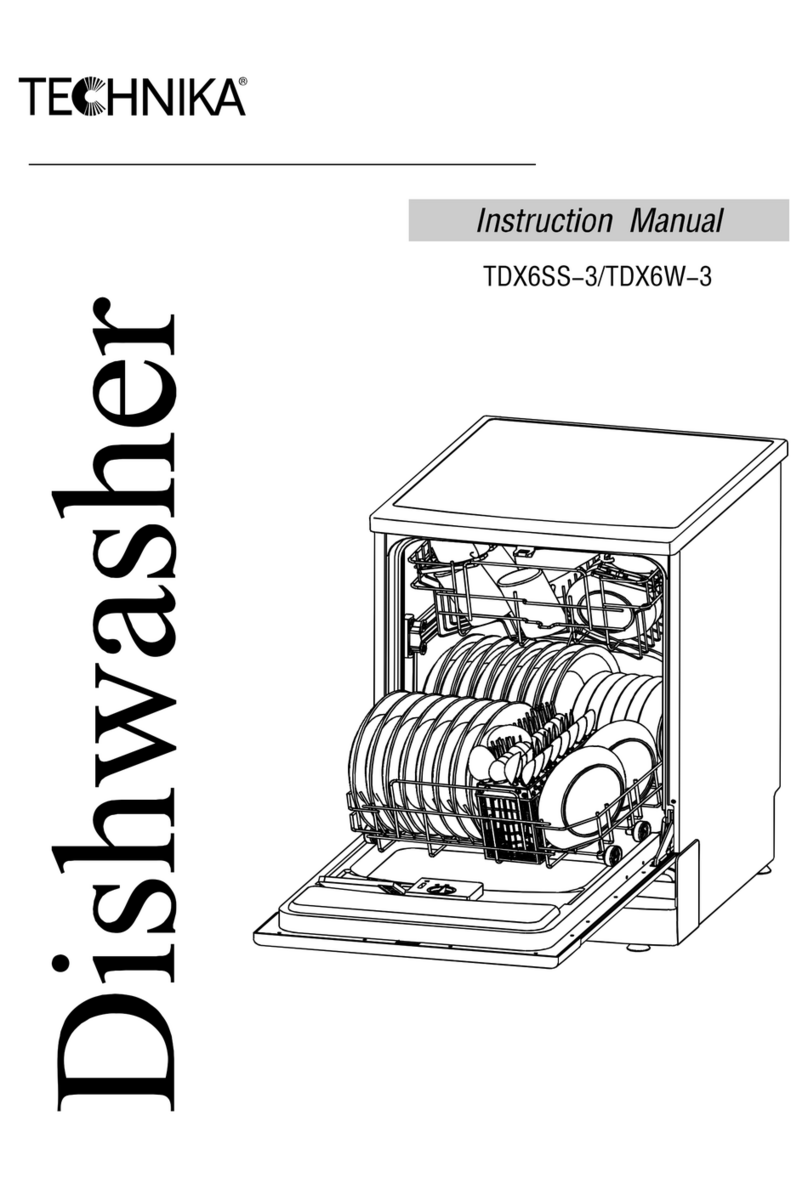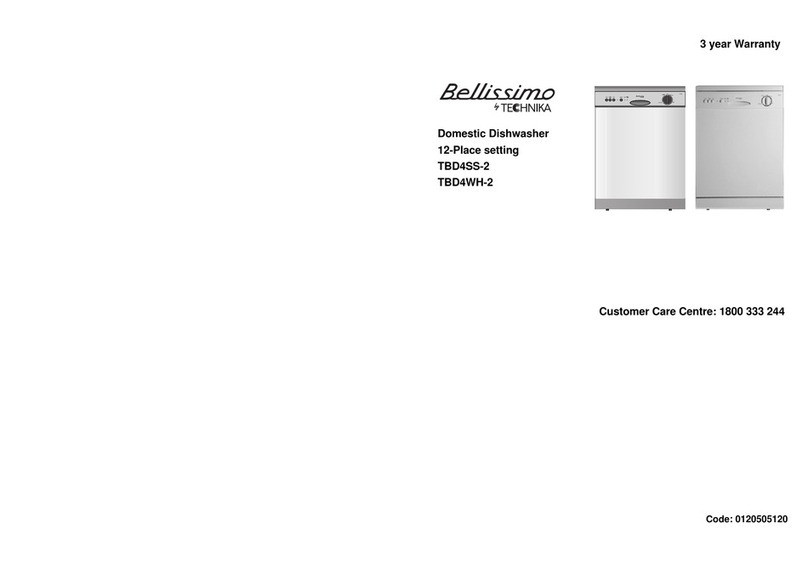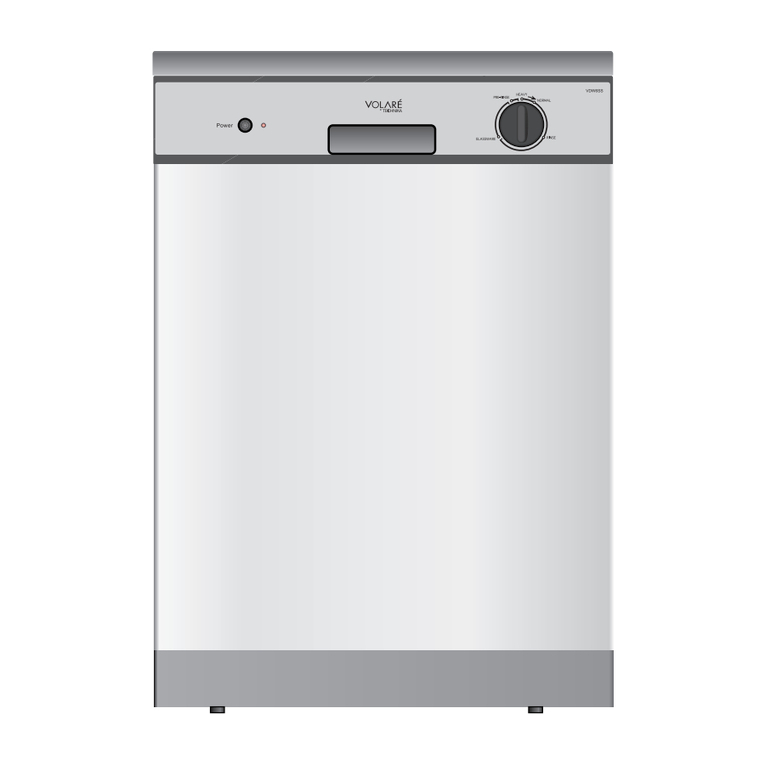.5. .6.
Turning on the Appliance
Starting a wash cycle
- Make sure that the plug for the appliance is inserted into the wall
socket.
- Make sure that the water supply is turned on to full pressure.
- Load the dishwasher (see the section entitled, "Loading the
Dishwasher" on page 4).
- Pour in the detergent (see the section entitled, "Detergent
and Rinse Aid" on page 3).
- Turn the knob located on the right of the control panel in
clockwise direction until the number or symbol for the cycle set-
ting is aligned with the reference mark (see the section entitled,
"Wash Cycle Table" on page 7).
- Press the POWER button, and the POWER light will turn on. At
this point, the wash cycle will begin. Cancelling or modifying a wash cycle setting
A cycle that is underway can only be modified if it has been
running for a short time. Otherwise, the detergent may have al-
ready been used, and the appliance may have already drained
the wash water. If this is the case, the detergent dispenser must
be refilled (see the paragraph entitled, "Loading the Detergent"
on page 3).
Press the POWER button, and the ON light will turn off. Rotate
the knob in clockwise direction to the desired cycle setting (see
the section entitled: Starting a wash cycle?F. Then, turn the
dishwasher back on using the POWER button.
If you forget to load some of the dishes
The wash cycle can be interrupted by pressing the POWER button.
You can then load additional dishes and turn the appliance back
on. The cycle will start where it left off.
Wait a few minutes before unloading the dishwasher to avoid
handling the dishes and utensils while they are still hot and
more susceptible to breakage. They will also dry better.
Wash Cycle Adjustment Buttons
Eco Button
This button (see "close-up View - Control Panel" on page 1, letter
"G" ) is used for normal dirty dishes, pots and pans. It is a stan-
dard daily cycle. This button reduces the washing temperature
from 60=to 50I=saving energy costs.
Half Load Button
This button (see "close-up View - Control Panel" on page 1, let-
ter "H" ) makes it possible to wash dishes using only the upper
rack if there are not enough dishes for a full load. This will allow
you to save on water and electricity.
Fast
This button (see "close-up View - Control Panel" on page 1, letter
"I" ) , when pressed with wash cycle 4 (glassware) make it pos-
sible to run the wash cycle at a lower temperatur (50) and elimi-
nates the drying phase.
It can be used before setting any of the wash cycles, except for
the intensive cycles (if included in the wash cycle table ). Please
keep in mind that the amount of detergent should also be cut in
half.
At the end of the wash cycle
When the knob stops turning and is aligned with a STOP mark
(see figure), the cycle has finished. Turn off the appliance using
the POWER button, turn off the water supply and open the door
of the dishwasher.
- It is important to try and run the dishwasher when it is fully
loaded to save on energy. In order to prevent odors from form-
ing and food from caking onto the dishes, you can run the pre-
rinse cycle.
- Choose the right wash cycle: the choice of cycle depends on
the type of dishware, cookware and utensils being washed and
how dirty they are.
Energy Saving Tips
- Use the right amount of detergent: if you use too much detergent,
the result will not be cleaner dishes, but, rather, a greater nega-
tive impact on the environment.
How to Keep Your Dishwasher in Shape
After Every Wash
After every wash, turn off the water supply to the appliance and
leave the door slightly ajar so that moisture and odors are not
trapped inside.
Remove the Plug
Before cleaning or performing maintenance, always remove the
plug from the socket.
No Solvents or Abrasive Cleaning Products
To clean the exterior and rubber parts of the dishwasher, do not
use solvents or abrasive cleaning products. Use only a cloth and
warm soapy water.
To remove spots or stains from the surface of the interior, use a
cloth dampened with water and a little white vinegar, or a clean-
ing product made specifically for dishwasher.
When You Go on Holiday
When you go on holiday, it is recommended that you run a wash
cycle with the dishwasher empty and then remove the plug from
the socket, turn off the water supply and leave the door of the
appliance slightly ajar. This will help the seals last longer and pre-
vent odors from forming within the appliance.
Moving the Appliance
If the appliance must be moved, try to keep it in the vertical position.
If absolutely necessary, it can be positioned on its back.
Seals
One of the factors that cause odors to form in the dishwasher is
food that remains trapped in the seals. Periodic cleaning with a
sponge will prevent this from occurring.



